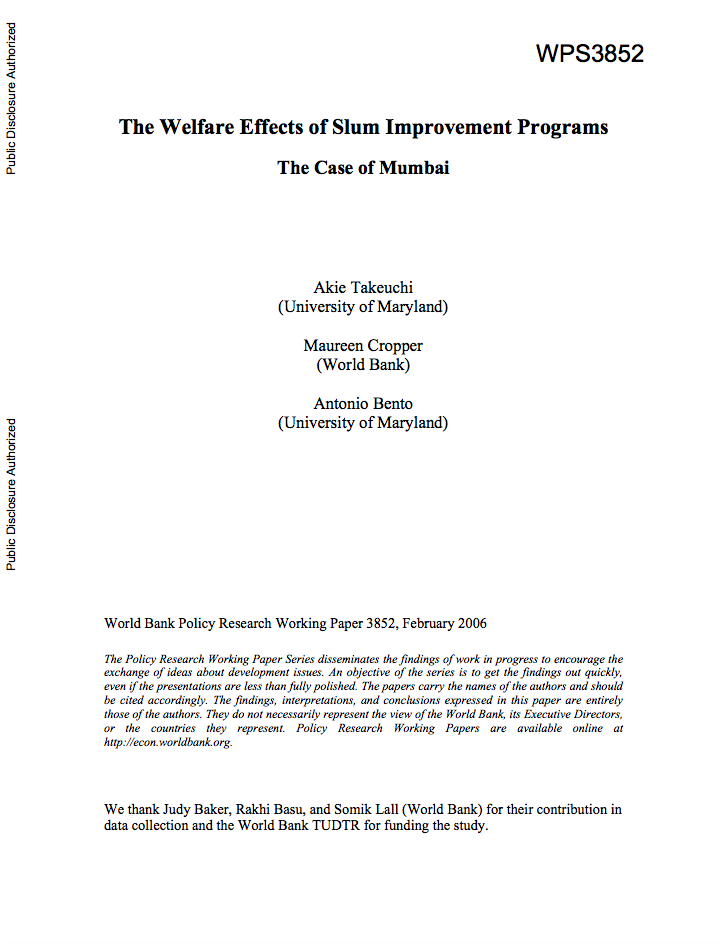The World Bank is a vital source of financial and technical assistance to developing countries around the world. We are not a bank in the ordinary sense but a unique partnership to reduce poverty and support development. The World Bank Group has two ambitious goals: End extreme poverty within a generation and boost shared prosperity.
- To end extreme poverty, the Bank's goal is to decrease the percentage of people living on less than $1.25 a day to no more than 3% by 2030.
- To promote shared prosperity, the goal is to promote income growth of the bottom 40% of the population in each country.
The World Bank Group comprises five institutions managed by their member countries.
The World Bank Group and Land: Working to protect the rights of existing land users and to help secure benefits for smallholder farmers
The World Bank (IBRD and IDA) interacts primarily with governments to increase agricultural productivity, strengthen land tenure policies and improve land governance. More than 90% of the World Bank’s agriculture portfolio focuses on the productivity and access to markets by small holder farmers. Ten percent of our projects focus on the governance of land tenure.
Similarly, investments by the International Finance Corporation (IFC), the World Bank Group’s private sector arm, including those in larger scale enterprises, overwhelmingly support smallholder farmers through improved access to finance, inputs and markets, and as direct suppliers. IFC invests in environmentally and socially sustainable private enterprises in all parts of the value chain (inputs such as irrigation and fertilizers, primary production, processing, transport and storage, traders, and risk management facilities including weather/crop insurance, warehouse financing, etc
For more information, visit the World Bank Group and land and food security (https://www.worldbank.org/en/topic/agriculture/brief/land-and-food-security1
Resources
Displaying 3721 - 3725 of 4907Rwanda : Toward Sustained Growth and Competitiveness, Volume 2. Main Report
Rwanda established targets for Gross
Domestic Product (GDP) growth and poverty reduction, to be
achieved by the year 2020; these were to (i) raise real per
capita income from $230 to $900; and (ii) reduce the poverty
incidence by half. To reach these targets, the Government
projected in its 2002 Poverty Reduction Strategy Paper
(PRSP) that GDP growth will to be in the range of 6 to 7
percent over the medium term. The PRSP focused on six
The Impacts of Climate Change on Regional Water Resources and Agriculture in Africa
This paper summarizes the methods and
findings of the hydrological assessment component of the
project studying likely impacts of climate change on water
resources and agriculture in Africa. The first phase of the
study used a version of a conceptual rainfall-runoff model
called WatBal (Water Balance) applied to gridded data to
simulate changes in soil moisture and runoff across the
whole continent of Africa rather than to any particular
Property Taxes in the Punjab, Pakistan
This note provides an overview of the current property taxation system in the Punjab Province based on the premise that the property tax: 1) is essentially a fiscal tool; 2) is not an instrument of social redistribution; 3) system should be kept simple; and 4) is a technical instrument with strong financial, institutional, and political connotations. This note summarizes the key attributes of the present property taxation system of the Punjab Province and proposes some solutions for improving the property tax system.
Growth Diagnostics for a Resource-Rich Transition Economy : The Case of Mongolia
This paper uses a growth diagnostics
approach à la Hausmann, Rodrik, and Velasco (HRV) to
identify the most 'binding' constraints to private
sector growth in Mongolia - a small, low-income,
mineral-rich, transition economy. The approach of applying
the HRV methodology is useful in those cases where a lack of
data prevents us from estimating shadow prices to identify
the most 'binding' constraint to growth. We find
The Welfare Effects of Slum Improvement Programs : The Case of Mumbai
The authors compare the welfare effects of in situ slum upgrading programs with programs that provide slum dwellers with better housing in a new location. Evaluating the welfare effects of slum upgrading and resettlement programs requires estimating models of residential location choice, in which households trade off commuting costs against the cost and attributes of the housing they consume, including neighborhood attributes. The authors accomplish this using data for 5,000 households in Mumbai, a city in which 40 percent of the population live in slums.







